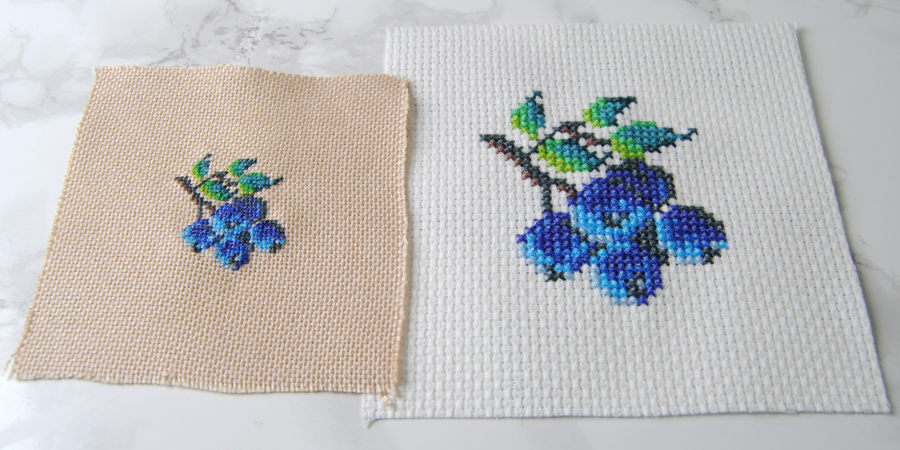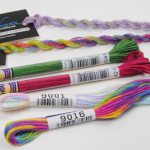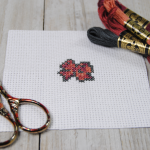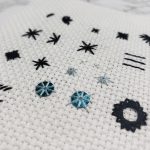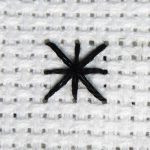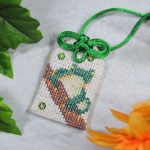Many of us roll our eyes or giggle when we’re working on our latest cross stitch project and someone compliments us on our ‘knitting.’ It’s not terribly uncommon for those outside of the craft community to not be able to tell crochet from macrame. Cross stitch from embroidery. Maybe they haven’t even heard of petit point.
But to be honest, even if you’re in the know you might perpetuate this by not wanting to be ‘that guy’ (or gal) that goes “Um, actually…” and goes into a rant about stitch styles and differences. Or you might just use the more common term to avoid questions.
I’ve been doing petit point and posting it with #crossstitch for years. I certainly knew better, but #petitpoint has like… 29k posts. Compared to #crossstitch’s 3.6 MILLION. It just was more likely to get seen if I tagged it as cross stitch. I also refer to my cross stitch afghan project as a ‘quilt’ or ‘blanket’ because I was tired of people asking what an afghan was. We’re all guilty of it.
But today I wanted to clear some things up and explain the difference between cross stitch and petit point. They’re really rather similar.
That said, I’m by no means an expert on needlepoint styles. Nor is my technique in any way reflective of traditional petit point. This is just information I’ve gathered via experience and my own research. You should do some research on your own about petit point to learn about the historical and traditional uses of it!
This post may contain affiliate links. If you buy something using one of these links, I earn a small commission. However, there is no extra cost to you. Thanks for understanding! Learn more in my Disclosures & Privacy Policy.
Table of Contents
Picking a Pattern for Petit Point
Petit point pretty much uses the same patterns as cross stitch. Any petit point pattern can be easily cross stitched. However, when converting a cross stitch pattern to petit point you want to avoid patterns that have lots of 1/4 and 3/4 stitches, and patterns with lots of backstitch.
You can still certainly do these in petit point, you’ll just have to sacrifice the quarter stitches. For example, here’s a shot of my stitch from the Lunar Princess SAL. Normally, this has dual 3/4 stitches to create the curves of the moons. I just kinda picked my stitches to make the general shape of the moon and called it good.
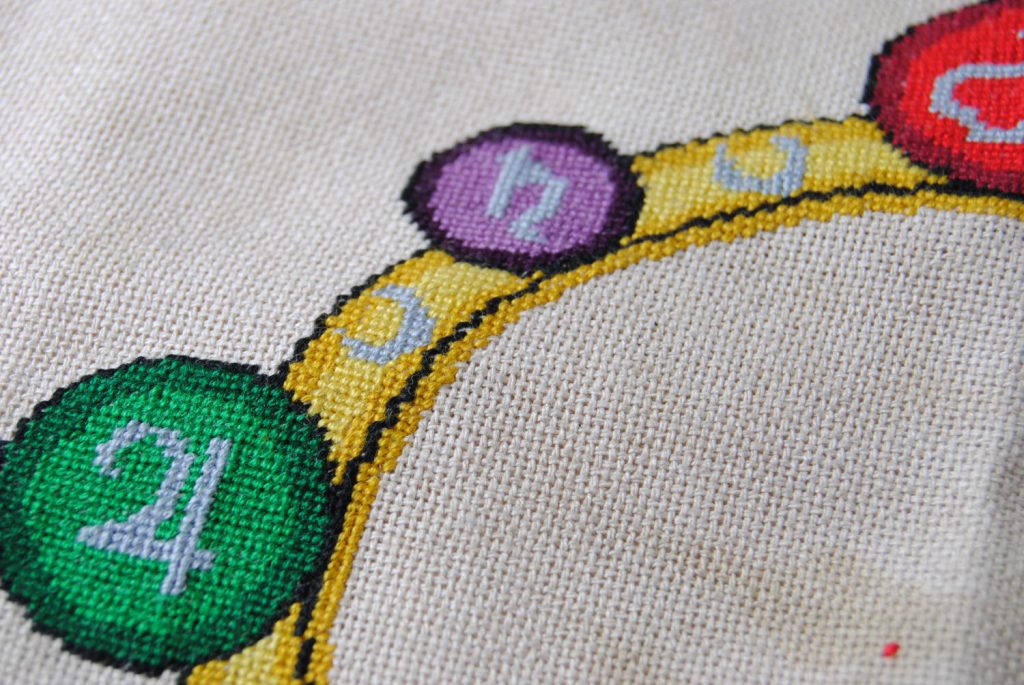
Fabric choice
One of the main differences in petit point is that it is meant to be… well… ‘petite’. As such it is done on higher count fabrics.
Traditionally this is done on 24 count to 40 count silk gauze or canvas. However, I tend to simply use higher counts evenweave and linen to give them a more cross stitch type feel.
The main thing to note is that fabric count also dictates the overall size of your design. Petit point is a great choice when you’re wanting to make a pattern smaller. Either to fit more detail into a certain space, or because you don’t have enough room on your wall for a larger frame. People even use it to make tiny dollhouse furniture!
For example, I often use this as a way to fit things into 1″ round pendant trays as described in my pendant tutorial.
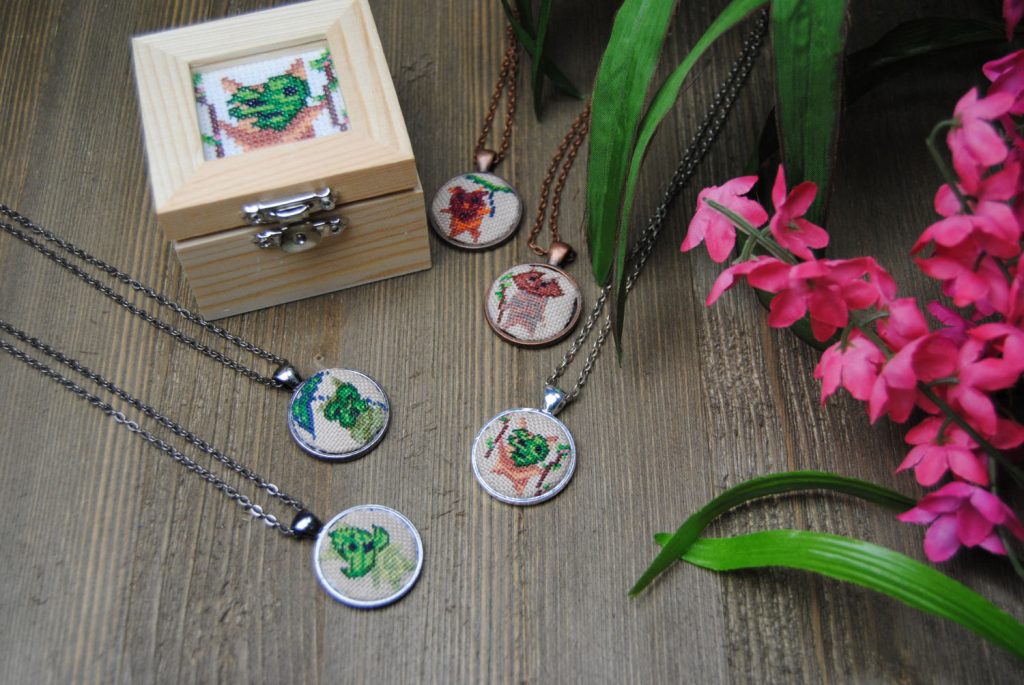
Stitch style
The other main difference between petit point and cross stitch is that you’re not crossing your stitches. You’re actually using a continental stitch, sometimes called tent stitch. But really what it boils down to is that it is half stitch.
Ideally, this is stitched in a manner that you’re stitching them all facing the same way and creating vertical lines on the back. Needlepointers tend to be very particular about what their back looks like, so check out a tutorial on continental stitch if you want your back to look as tidy as possible. Stitching in such a manner also helps prevent your fabric from getting skewed.
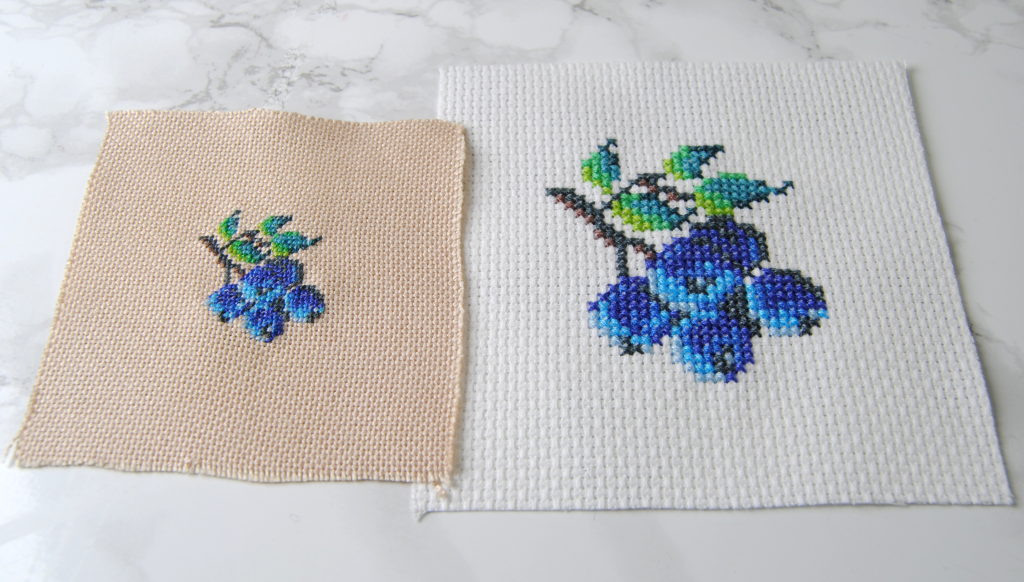
By stitching just with tent stitch, you’ll find that the design also stitches up much faster. Which means this technique is also good for when you need to get something done quicker. Such as for a birthday gift you forgot about and needed to make something last minute.
This also means it’s good for really large projects that can sometimes feel like you’re not making any progress on at all. I like to use this technique for my HAED stitches. Progress is easier to see and it’s not as discouraging to be in a sea of a single color for days.
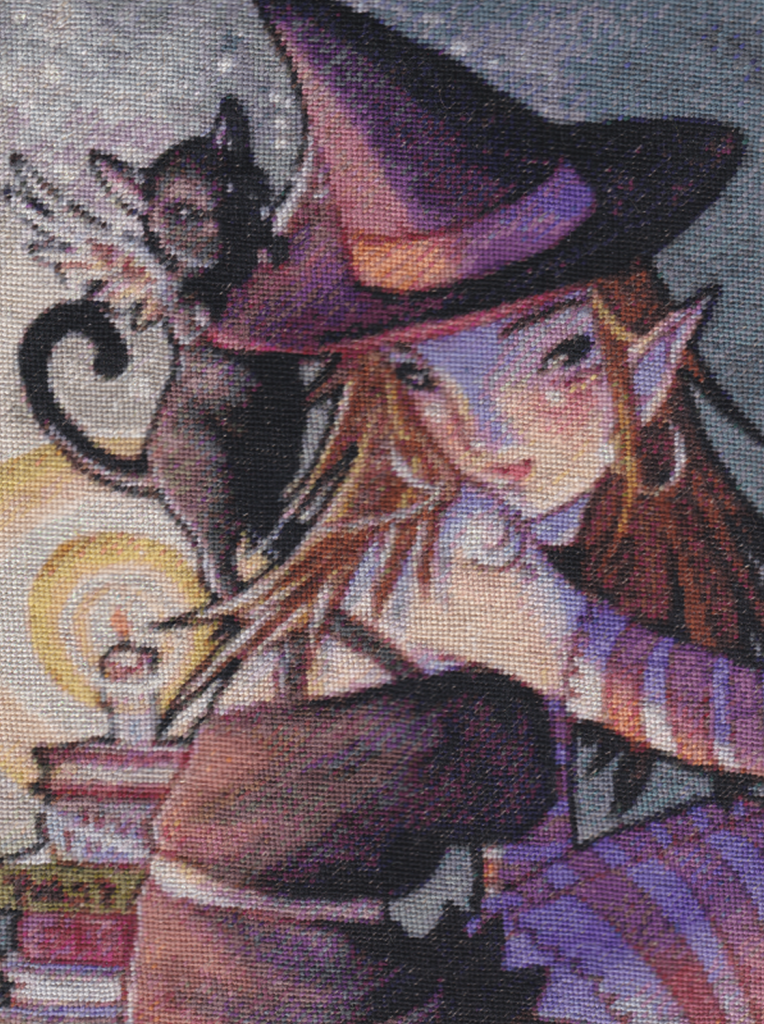
Thread Count
I could not find any ‘rules’ regarding amount of threads on petit point, as it was traditionally done with fine silks to fit the high-count gauze. As with standard cross stitch, it all depends on your fabric count. For best results, do a test swatch on your chosen fabric to decide how many threads you’d prefer to use on your project.
My examples are pretty much all 2 strands on 28 count evenweave, and I’m pretty happy with that coverage. I’d probably go up to 3 strands if using 22 or 24 count fabric though. If I ever work up the courage to try some 40 count silk gauze, I might just do a single strand.
Needle size
Due to the small count fabrics you might find yourself needing to use a thinner needle, as well. I’d recommend swapping out to a 26 or 28 size needle if you’re having trouble getting through the fabric without it warping!
When to not use petit point
You’ll notice that in full coverage examples like my HAED, it can be hard to tell that it’s not cross stitch from a distance.
However, in designs without a solid background, the edges look a bit more ‘jagged’ as petit point than they would with a full cross stitch. It’s up to you whether you like or dislike this effect.
It’s most noticeable on my biscornu designs where I typically have the same motif in the four corners. Because I try to face all my stitches in the same direction, this can make the corners look somewhat different to each other. As an example, check out the corners of my Eevee biscornu designs:
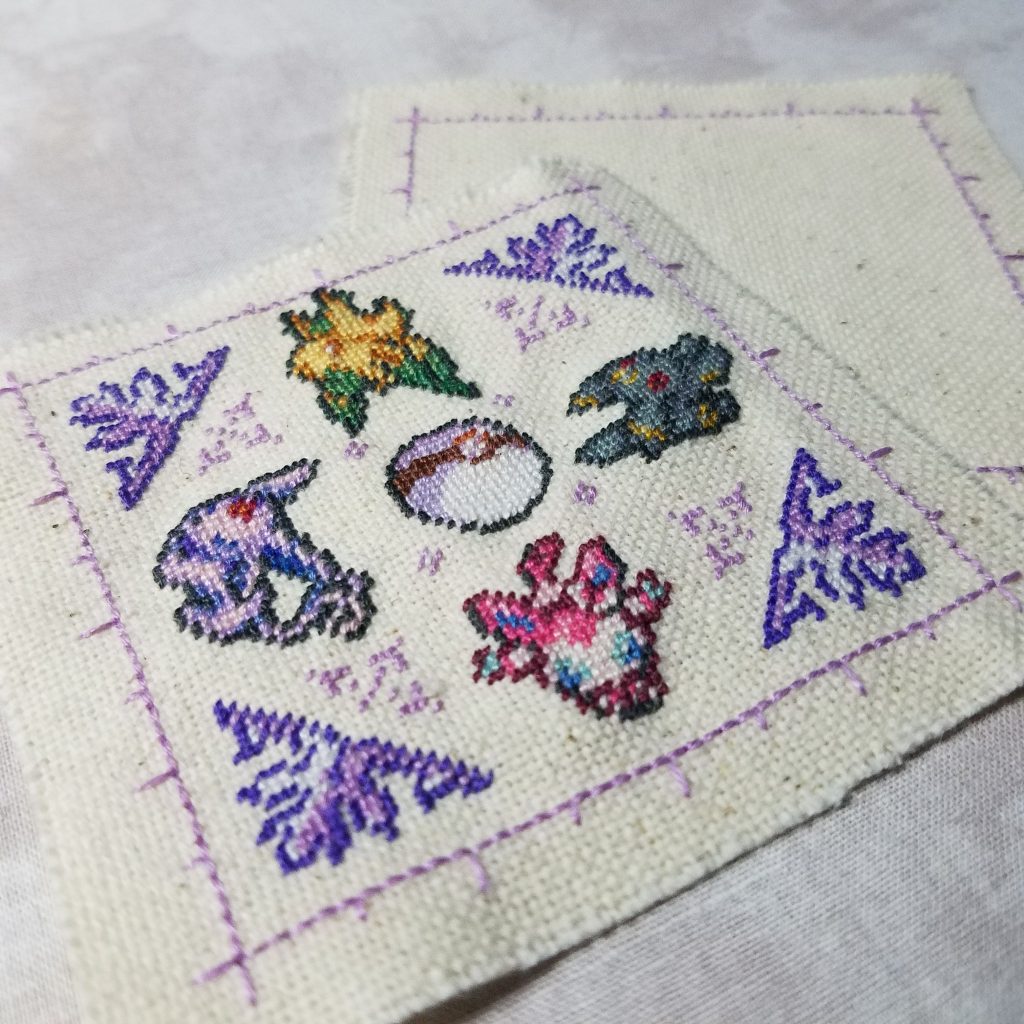
While I clearly don’t mind the effect, some do. So it’s important to be aware of how this style can affect your designs before jumping in.
Have you ever tried petit point? Would you try it now? Tag me on Insta/Twitter if you do! I’d love to see!

